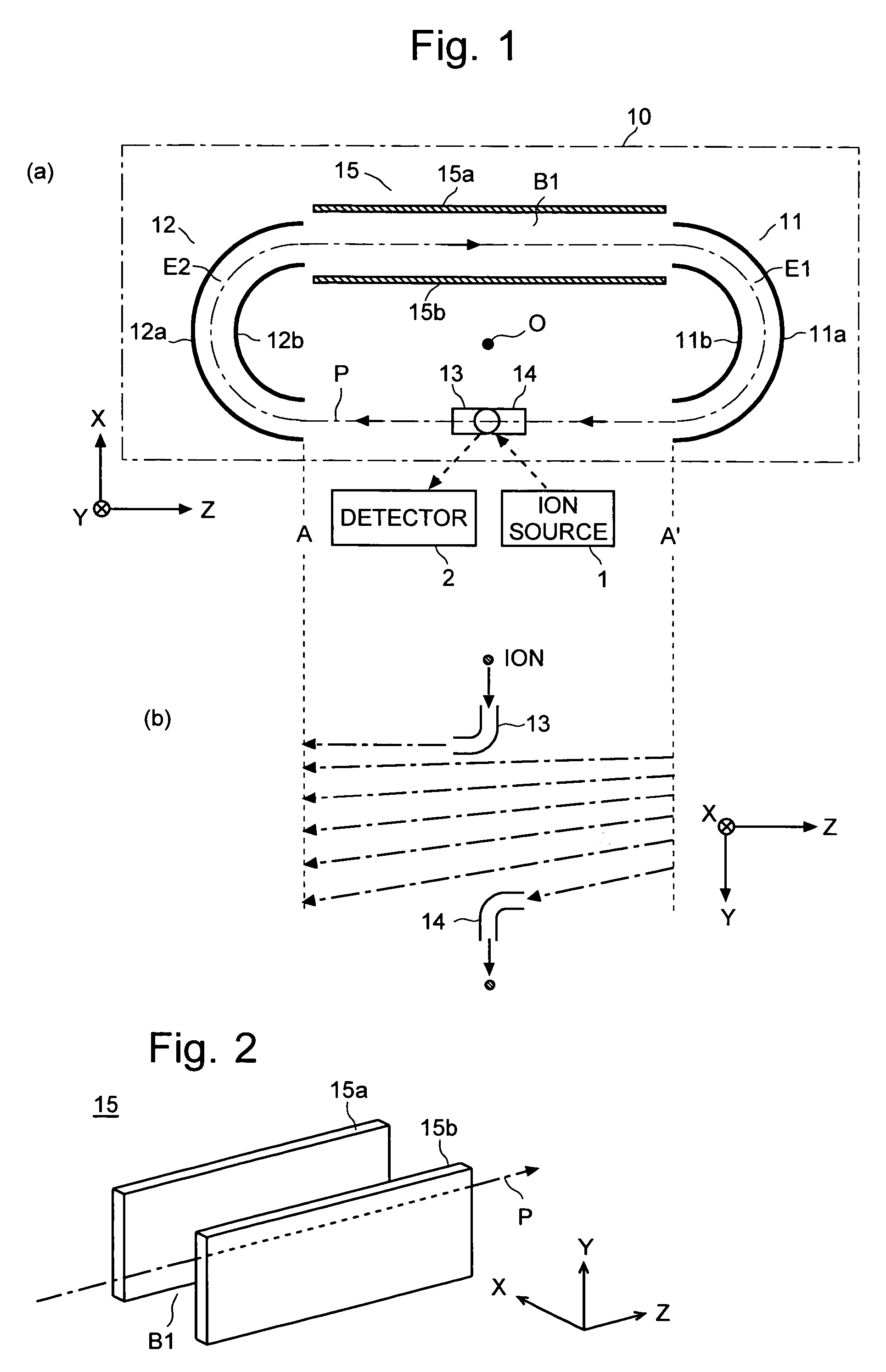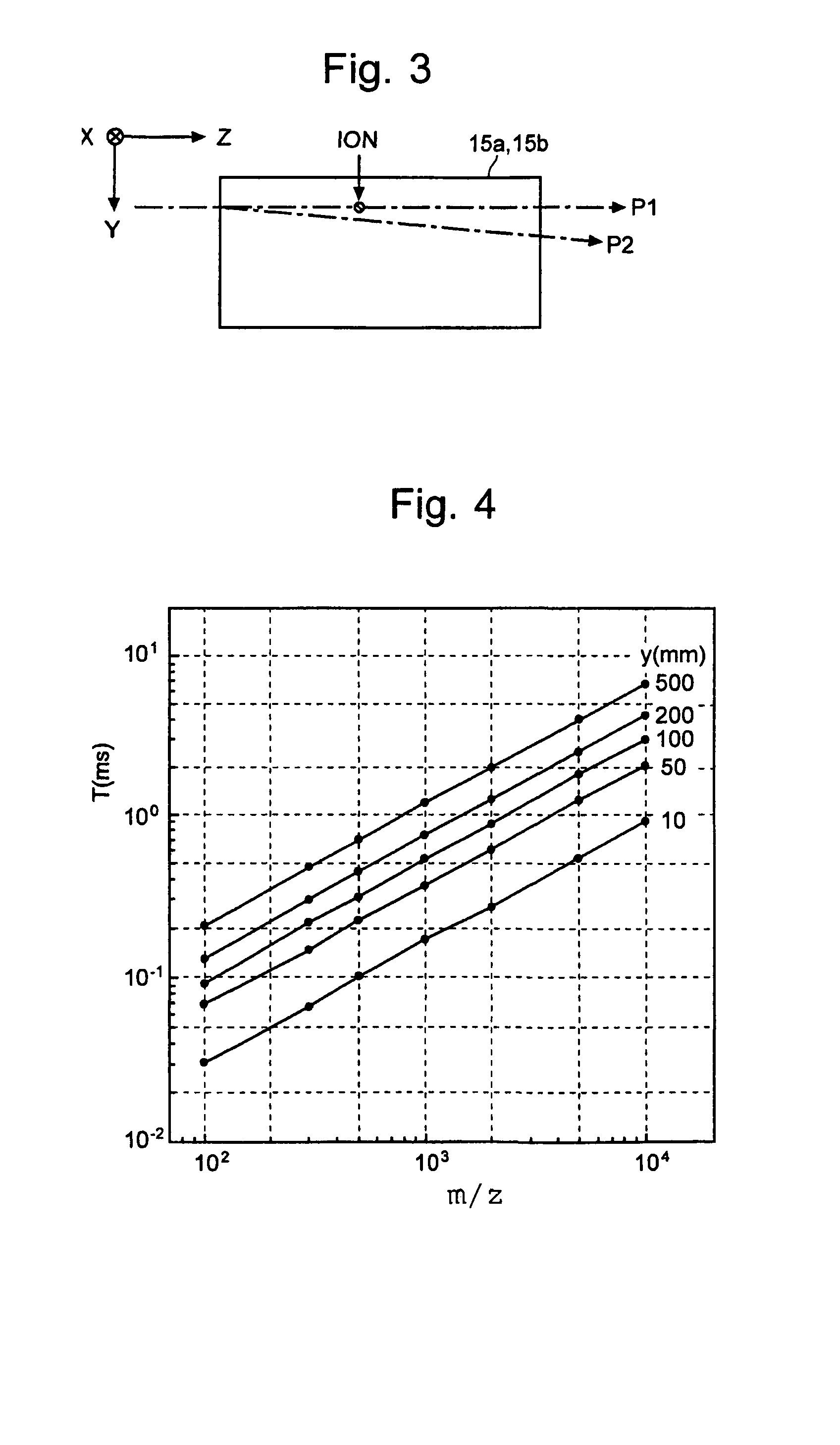Time of flight mass spectrometer
a mass spectrometer and time-of-flight technology, applied in mass spectrometers, separation processes, dispersed particle separation, etc., can solve the problems of limited overall size, limited flight distance, and inability to produce an adequate strength of electric field in construction, so as to improve the mass resolution, improve the effect of mass resolution and strengthen the magnetic field
- Summary
- Abstract
- Description
- Claims
- Application Information
AI Technical Summary
Benefits of technology
Problems solved by technology
Method used
Image
Examples
first embodiment
[0041]the time of flight mass spectrometer (TOFMS) according to the present invention is described with reference to the drawings. FIG. 1 schematically shows the construction of the main components of the TOFMS of the present embodiment, including the flight space. In FIG. 1, (a) is a plan view of the flight space 10 and (b) is a side view of the flight path of the ions within the space between A-A′ in (a). For this construction, a three-dimensional orthogonal coordinates system having three axes of X, Y and Z is defined as shown in FIGS. 1(a) and 1(b).
[0042]The TOFMS of the present embodiment includes an ion optics system having a pair of cylindrical electrodes 11 and 12 spaced apart by a predetermined distance along the Z-axis within the flight space 10. The cylindrical electrode 11 (or 12) consists of sector-shaped outer and inner electrodes 11a and 11b (or 12a and 12b). These electrodes 11a, 11b, 12a and 12b can be created by setting a double-wall cylinder parallel to the Y-axis...
second embodiment
[0050]FIG. 5 schematically shows the construction of the main components of the TOFMS of another embodiment (the second embodiment), including the flight space. In the present embodiment, the TOFMS has two magnetic field generators: the first magnetic field generator 15 for creating the deflecting magnetic field B1 in the linear section of the flight path between the exit of the cylindrical electrode 12 and the entrance of the cylindrical electrode 11; and the second magnetic field generator 16 for creating another deflecting magnetic field B2 in the linear section of the flight path between the exit of the cylindrical electrode 11 and the entrance of the cylindrical electrode 12. The second magnetic field generator 16 has a parallel pair of planer magnetic poles 16a and 16b spaced apart in the X-direction and facing each other across the central path P of the ions.
[0051]The direction of the magnetic field of the deflecting magnetic field B2 created by the second magnetic field gene...
PUM
 Login to View More
Login to View More Abstract
Description
Claims
Application Information
 Login to View More
Login to View More - R&D
- Intellectual Property
- Life Sciences
- Materials
- Tech Scout
- Unparalleled Data Quality
- Higher Quality Content
- 60% Fewer Hallucinations
Browse by: Latest US Patents, China's latest patents, Technical Efficacy Thesaurus, Application Domain, Technology Topic, Popular Technical Reports.
© 2025 PatSnap. All rights reserved.Legal|Privacy policy|Modern Slavery Act Transparency Statement|Sitemap|About US| Contact US: help@patsnap.com



